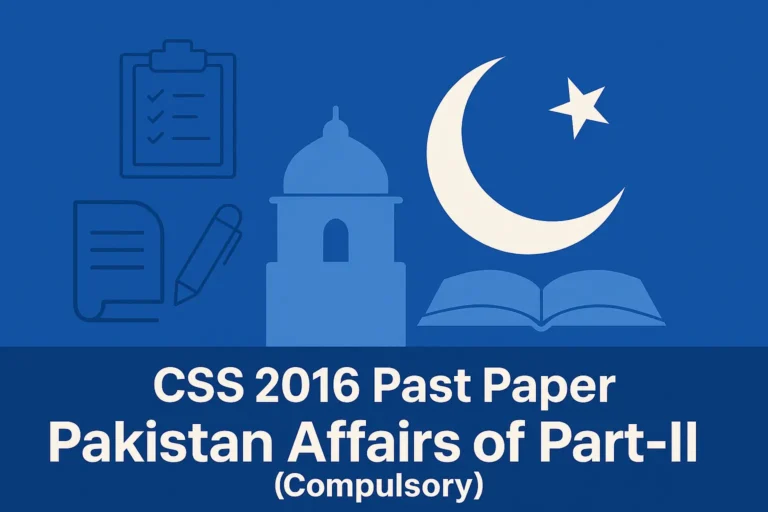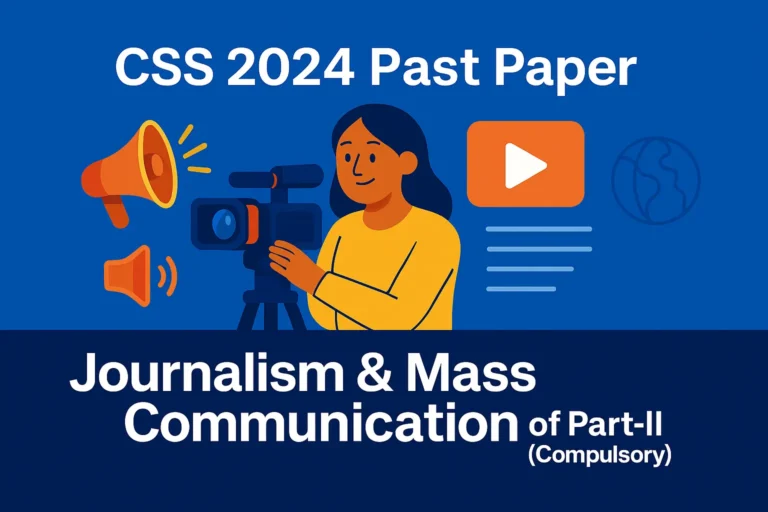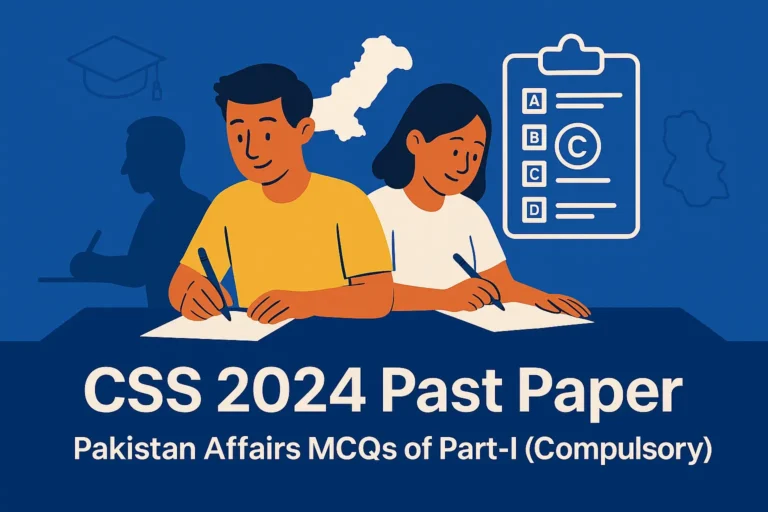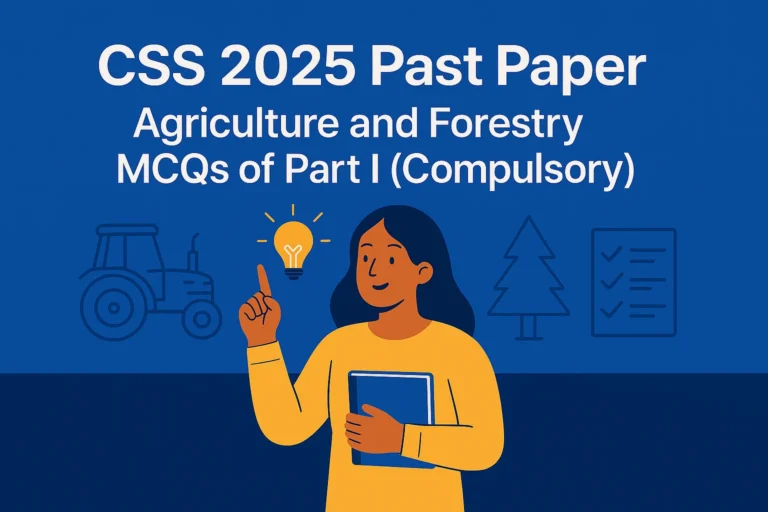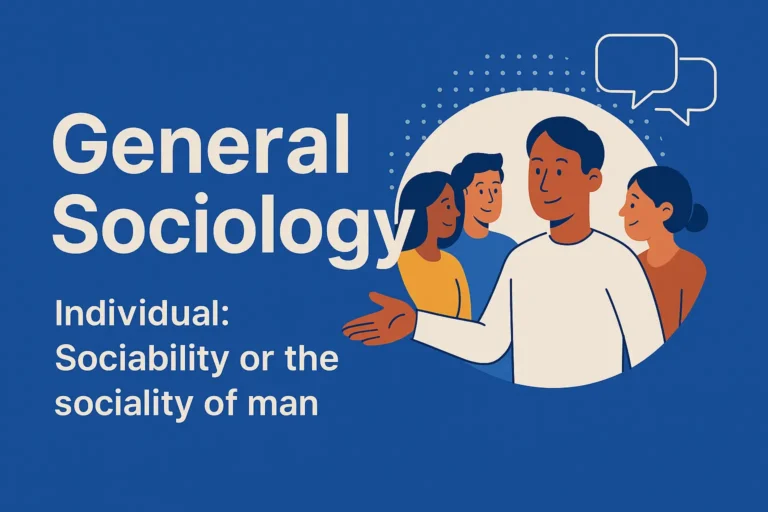CSS Past Paper 2024 Agriculture and Forestry MCQs (Part 1)
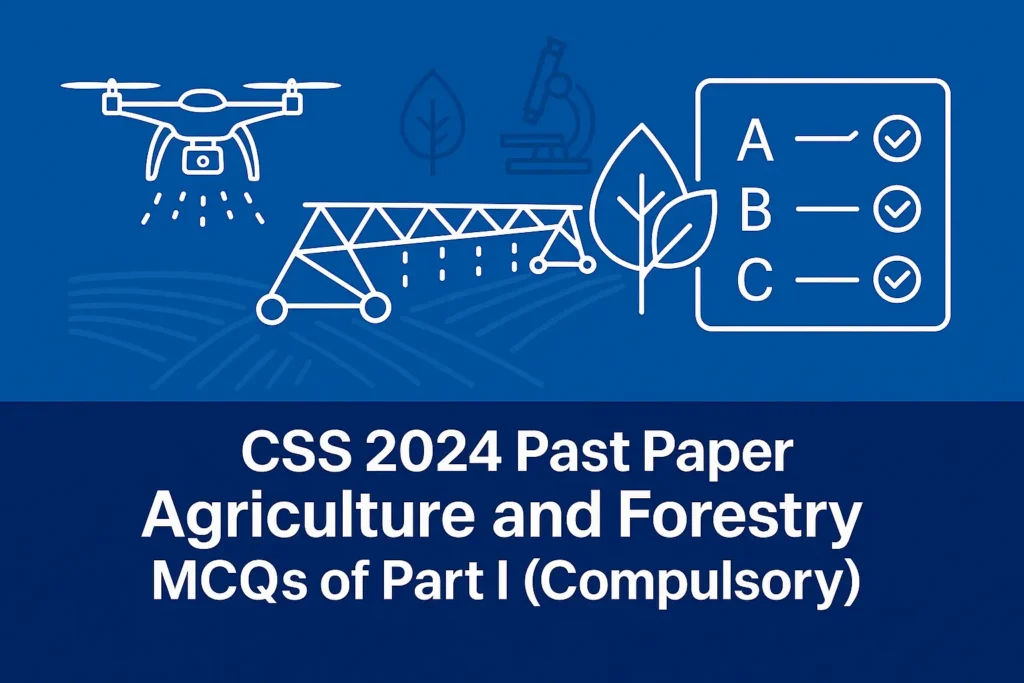
CSS | Past Paper | Group 5 | 2024 | Part 1 | MCQs
Below are the solved multiple-choice questions (MCQs) from the CSS Past Paper 2024 Agriculture and Forestry MCQs (Part 1). Each question includes all the options, the correct answer is bolded, and a short explanation is provided for clarity.
1. Which soil type has the smallest particle size?
(A) Sand
(B) Silt
(C) Clay
(D) None of these
💡 Clay particles are the smallest, giving soil high water-holding capacity.
2. Optimal pH range for most crops is:
(A) 3–5
(B) 6–7
(C) 8–10
(D) None of these
💡 Most crops grow best in neutral to slightly acidic soils (6–7).
3. The process of breaking down organic matter into simpler compounds by microorganisms is:
(A) Photosynthesis
(B) Respiration
(C) Decomposition
(D) None of these
💡 Decomposition recycles organic matter into nutrients available for plants.
4. The practice of growing two or more crops in proximity to enhance pest control and nutrient utilization is:
(A) Crop rotation
(B) Monoculture
(C) Agroforestry
(D) None of these
💡 Agroforestry/cropping mixes improve pest control and soil fertility.
5. The cultivation of crops without the use of soil is known as:
(A) Hydroponics
(B) Aeroponics
(C) Precision farming
(D) None of these
💡 Hydroponics grows plants in nutrient-rich water without soil.
6. The hormone responsible for promoting cell elongation and bending in response to light is:
(A) Auxin
(B) Gibberellin
(C) Cytokinin
(D) None of these
💡 Auxin regulates phototropism and stimulates cell elongation.
7. The process of exposing seeds to moisture and temperature to initiate germination is known as:
(A) Stratification
(B) Scarification
(C) Vernalization
(D) None of these
💡 Stratification simulates natural conditions to break dormancy in seeds.
8. The primary role of pheromones in pest management is:
(A) Killing pests directly
(B) Repelling pests
(C) Attracting pests for monitoring
(D) None of these
💡 Pheromones lure pests into traps for monitoring and control.
9. Which insect order includes pests such as grasshoppers and locusts?
(A) Orthoptera
(B) Coleoptera
(C) Lepidoptera
(D) None of these
💡 Orthoptera includes locusts and grasshoppers, serious crop pests.
10. The primary purpose of backcrossing in plant breeding is:
(A) Creating hybrids with increased heterozygosity
(B) Introducing resistance to diseases
(C) Fixing desirable traits in a new genetic background
(D) None of these
💡 Backcrossing incorporates specific traits into elite varieties.
11. The primary purpose of sustainable forestry is:
(A) Timber extraction only
(B) Maximizing short-term profits
(C) Clear-cutting for quick land regeneration
(D) None of these
💡 Sustainable forestry balances resource use and long-term ecosystem health.
12. The term “silviculture” refers to:
(A) Rearing of silkworm
(B) Forest disease management
(C) Cultivation of trees and forests
(D) None of these
💡 Silviculture is the science of growing and managing forests.
13. Which of the following is a common invasive species affecting forests?
(A) Oak tree
(B) Eucalyptus tree
(C) Kudzu vine
(D) None of these
💡 Kudzu vine spreads aggressively, threatening native forests.
14. In forestry, the term “coppicing” refers to:
(A) Planting new trees
(B) Pruning branches
(C) Thinning the forest canopy
(D) None of these
💡 Coppicing is cutting back trees to promote regrowth from stumps.
15. Which type of forest management aims to mimic natural disturbances, such as wildfires?
(A) Even-aged management
(B) Shelterwood cutting
(C) Uneven-aged management
(D) None of these
💡 Uneven-aged management maintains diversity similar to natural systems.
16. The practice of removing dead or diseased trees from a forest is known as:
(A) Salvage logging
(B) Pruning
(C) Clear-cutting
(D) None of these
💡 Salvage logging removes damaged or diseased trees to protect forest health.
17. Regeneration of a forest without direct human intervention is referred to as:
(A) Reforestation
(B) Afforestation
(C) Rehabilitation
(D) None of these
💡 Natural regeneration happens when forests regrow without planting.
18. The primary purpose of riparian forest buffers is:
(A) Soil erosion prevention
(B) Wildlife habitat conservation
(C) Carbon sequestration
(D) None of these
💡 Riparian buffers protect water quality and reduce soil erosion along rivers.
19. Which international agreement focuses on combating illegal logging and promoting trade in legally harvested timber?
(A) Kyoto Protocol
(B) Forest Law Enforcement, Governance, and Trade (FLEGT)
(C) Nagoya Protocol
(D) None of these
💡 FLEGT promotes sustainable timber trade and combats illegal logging.
20. In the context of biodiversity, the term “keystone species” refers to:
(A) Species that are abundant in number
(B) Species that play a crucial role in maintaining ecosystem structure
(C) Species that are endemic to a specific region
(D) None of these
💡 Keystone species are vital for ecosystem stability, despite their low numbers.
📘 Benefits of Practicing These MCQs
- ✅ These CSS Past Paper 2024 Agriculture and Forestry MCQs are compiled from authentic FPSC CSS past papers to match the real exam format.
- 💬 Practicing this CSS Past Paper 2024 Agriculture and Forestry MCQs set builds strong conceptual clarity for upcoming CSS exams.
- 🧾 Every question in this CSS Past Paper 2024 Agriculture and Forestry MCQs collection follows the official CSS exam syllabus approved by FPSC.
- 📊 Students appearing in CSS 2024 can rely on these Agriculture and Forestry MCQs for focused and authentic revision.
- 🔍 The solved CSS Past Paper 2024 Agriculture and Forestry MCQs section includes clear, one-line explanations for quick understanding.
- 🎯 Revise these CSS Past Paper 2024 Agriculture and Forestry MCQs regularly to master key topics from the CSS exam syllabus and boost your score.
- 🏆 These CSS Past Paper 2024 Agriculture and Forestry MCQs are essential for mastering the FPSC exam pattern and achieving success in CSS.
🏁 Final Note
Keep revising these CSS Past Paper 2024 Agriculture and Forestry MCQs to strengthen your grip on important concepts and improve accuracy in upcoming CSS exams. Regular practice with these CSS Past Paper 2024 Agriculture and Forestry MCQs will help you score higher and build full command over the CSS exam syllabus.
👉 Also read CSS Past Paper 2024 Agriculture and Forestry (Part-II Descriptive)
🔗 Check FPSC past papers directly from the official FPSC website.

